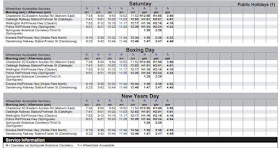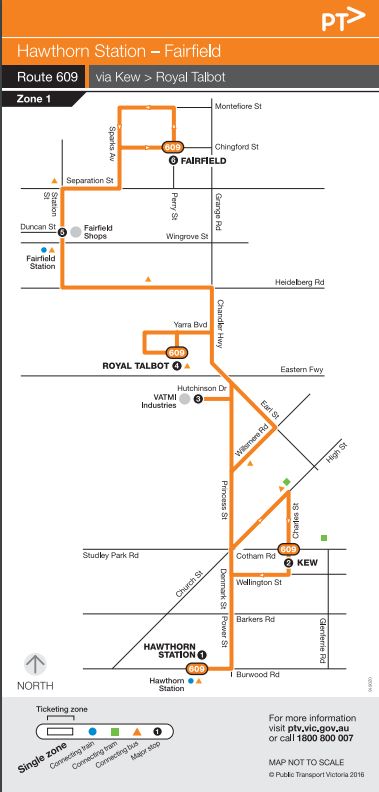The most important factor that determines the usefulness of a public transport service is not whether it's a train, tram or bus but its timetable, route and stops.
Many are in beach holiday mode so it's only fitting we introduce bus route 788 running between Frankston and Portsea via Mt Eliza, Mornington, Dromana, Rosebud, Rye and Sorrento.
If there was one bus route that dominates its local government area, the 788 is it. Because for tens of thousands of people in Mornington Peninsula Shire, the 788 is the only public transport there is, Nothing significant runs close to it for most of its ~50km length / 100 minute run time. Forget this Zone 2 stuff - the 788 penetrates Zones 3 and 4 as well - just like the Geelong train.
Consequently the 788 is asked to do the job of both a rural and urban route. It does the job of a train line (that doesn't exist) or a freeway (that does) for long-distance trips to Frankston. As well as carrying sizable local shoppers between Rye, Tootgarook, Capel Sound, Rosebud and Dromana. Parts run fast along main roads while other parts serve narrow 20km/h speed humped local streets. Also, to speed travel buses towards Frankston will only call in at Mt Eliza if requested.
788 is so long that its stops are numbered. There are over 130 of them. Though there are pick up/set down restrictions nearer Frankston to speed travel through inner areas where other routes are available. 788 is the lifeblood of school time public transport up and down the peninsula. The length of 788 is such that it's a big deal if a service has been missed or a train connection broken - with trips of 30km or more casually calling a taxi or asking for a lift is not an option for many. Route 788 issues dominated last year's Metropolitan Transport Forum-sponsored candidate forum at Frankston and all parties promised to upgrade it.
788 buses fill on any warm weekend from November to Easter. Passengers get left behind and delays can be considerable. Varying road traffic volumes make efficient and reliable scheduling difficult. 788 is perhaps the only route to have its own Twitter hashtag frequently used by the operator.https://twitter.com/hashtag/r788
Route 788 runs about every 40 minutes on weekdays (including peaks). Services continue until unusually late at night on Fridays. On weekends gaps between buses are mostly 80 minutes. But there is a major exception, effective right now. 788 is the only route with extra trips over summer, with a 40 minute weekend frequency applying for a month after Boxing Day.
Regular timetable
Summer timetable
The question remains: What (if anything) would you do with the 788's timetable? Extra points if you consider wider regional travel including bidirectional connections with the Frankston train, which sometimes only arrives hourly (eg Sunday mornings) and scope for network coverage improvements (including any implications for Route 787 in the area).
.
Timetable Tuesday originally appeared as an article on the Urban Happiness Facebook group. Maps and timetables are from the old PTV website .
See other Timetable Tuesday items here
See other Timetable Tuesday items here


















